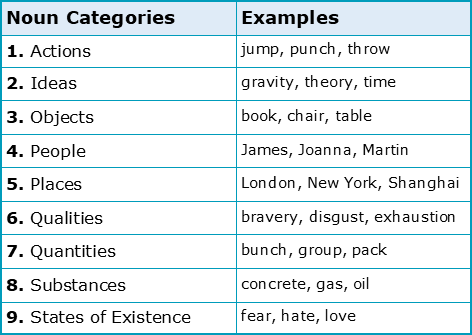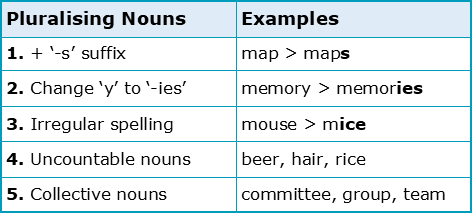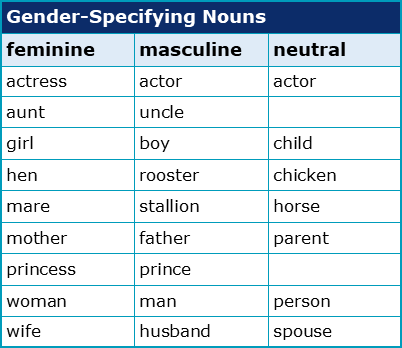What are the five functions of English nouns?

This is the first of five chapters about Nouns. To complete this reader, read each chapter carefully and then unlock and complete our materials to check your understanding.
– Introduce the concept of word classes in relation to nouns
– Provide a semantic and form-based definition of nouns
– Explore and exemplify the five common functions of nouns in the English language
Before you begin reading...
-
video and audio texts
-
knowledge checks and quizzes
-
skills practices, tasks and assignments
Chapter 1
As a language learner, you’re probably already quite familiar with the concept of classifying words into different groupings based on their form and function, such as which words are adjectives and which are verbs or adverbs. Knowing these word classes intimately allows a learner to have command of which suffixes, prefixes, syntactic structures and grammar are necessary to form accurate sentences in English. When writing academically, it’s particularly important that students are able to quickly recognise each class, understand and remember the various related rules, and correctly apply this knowledge to a wide range of vocabulary and phrases.
This short five-chapter reader on nouns is therefore intended to explore this word class in particular detail, focussing specifically on how nouns can be most usefully applied to both general and academic contexts. Chapter 1 first introduces the defining features of nouns before offering some discussion as to their five functions. Chapter 2 then provides five tests for effectively identifying nouns, with Chapters 3 and 4 later exploring and exemplifying the eleven different types of noun as well as the most important rules surrounding their distribution and form. Finally, Chapter 5 provides a short list of the 150 nouns and 15 noun-based expressions that are perhaps most useful when using academic English.
What is a noun?
Integral to the creation of phrases, clauses and sentences, nouns are by far the most common of all the eight word classes in the English language. Because nouns may be used to introduce people, places, objects, qualities, actions, ideas and states of existence, they’re generally and most simply described as being words that name things (‘noun’ comes from the Latin ‘nōmen’ meaning ‘name’). While mostly accurate, this meaning-based definition may however be somewhat overlapping and limited. Certain states of existence, for example, can be expressed by verbs, specific places by adverbs and particular qualities by adjectives, while some English nouns simply refuse to fit into these semantic categories at all.
Because any student that wishes to use nouns accurately must be able to successfully identify, correctly form and accurately use this word class every time, a better method of grammatical identification must be explored. As will be covered in Chapters 1 and 2, the most efficient way of identifying nouns is perhaps to first recognise their many functions in the English language and to then perform a number of syntactic and morphological tests on the words under investigation. However, before we begin to explore these aspects, let’s take a look at the text below that demonstrates in bold just how common and varied nouns are:

How are nouns useful in English?
It’s important to recognise that there is some variation in the form and function of nouns among the world’s languages. Particularly regarding form, processes of inflectional affixation may be used to demonstrate a variety of noun-based grammatical concepts such as number, gender or case that are dependent upon the noun’s interactions with its surrounding words. While such variation is of course important from a linguistic perspective, for students of academic English the most vital aspect about this word class is how nouns function in the English language. The following text is therefore intended to explore and explain the five common functions of English-language nouns.
Function 1: Nouns name things
As an open word class, nouns are extremely helpful for introducing new inventions and concepts to a language, such as the ‘internet’ or ‘wi-fi’. As the largest of all eight word classes, many thousands of new concepts have already been added to English dictionaries that students are now able to use with confidence in their speech and writing. As can be seen in the following table, nouns may be generally divided into nine categories based on the items they name, whether they’re actions, ideas, objects, people, places, qualities, quantities, substances and states of existence. Please note however that it’s not a good idea to rely solely upon meaning-based categorisations such as these to identify nouns. This is because some noun examples refuse to fit neatly into any of the following categories:

Function 2: Nouns categorise things
In addition to naming actions, objects, places, etc., nouns are also very useful for grouping items and concepts into hierarchies and taxonomies. A student could, for example, use both superordinating (higher) and subordinating (lower) nouns to demonstrate the connection and relationships between a number of concepts, such as is shown below for mammals:

Function 3: Nouns make clauses
If you already have a good understanding about sentence structures, then you should know that a sentence may be formed of one independent clause or a combination of many dependent and independent clauses. Because an independent clause generally requires a subject and a verb, and because nouns are the most important words in the subjects of clauses and in the objects of verbs and prepositions, this word class clearly functions to create the very basis of human language. The following three expressions are therefore used to show how nouns such as ‘book’ are central to the subjects and objects of a clause:



Function 4: Nouns can specify number
Almost all nouns in the English language are able to demonstrate number. It’s important, for example, for a speaker to be able to clearly communicate whether they have ‘an idea’ vs. ‘many ideas’, or ‘one pen’ vs. ‘three pens’. As is highlighted by the plural nouns ‘ideas’ and ‘pens’, the simplest way to show that a noun is plural is by first attaching the suffix ‘-s’ to its end and then preceding that noun with a quantifier such as ‘many’ or a numeric adjective such as ‘three’. However, and as will be further explained in Chapter 4, there is in fact much more variation in how nouns may be formed to demonstrate number and plurality:

Function 5: Nouns can specify gender
In addition to number, the final useful function of an English noun is that this word class can be used to demonstrate gender, such as masculine, feminine and neutral. While the morphological realisation of such genders (through the addition of prefixes or suffixes) may be far less common in English than in languages such as German or Spanish, there are still some very commonly used English nouns that change form in this way. However, because there’s no real pattern to gender-specifying nouns in English, a table of common examples is provided below:

Downloadables
Once you’ve completed all five chapters about nouns, you might also wish to download our beginner, intermediate and advanced worksheets to test your progress or print for your students. These professional PDF worksheets can be easily accessed for only a few Academic Marks.
Collect Academic Marks
-
100 Marks for joining
-
25 Marks for daily e-learning
-
100-200 for feedback/testimonials
-
100-500 for referring your colleages/friends